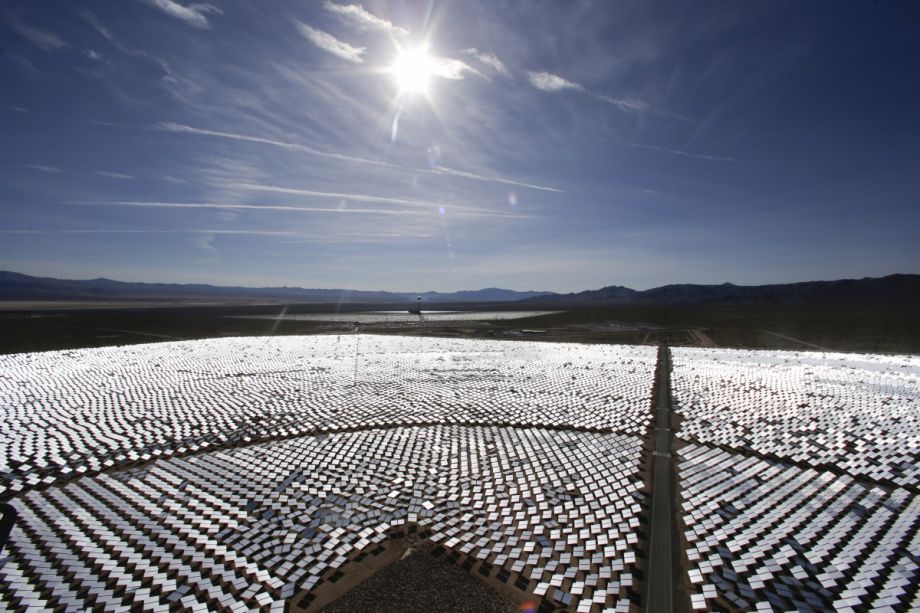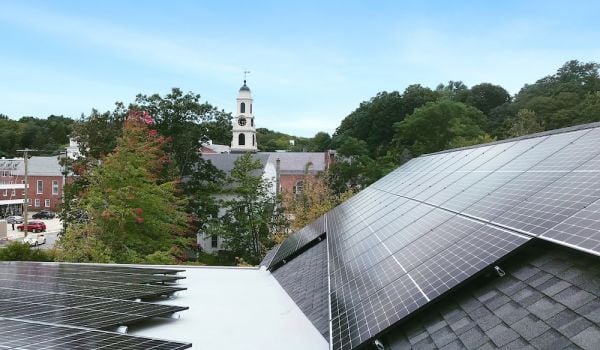Electric utilities make up around 7.5 percent of the total outstanding investment-grade corporate bond market in the U.S., which investors turn to when they want more reliable returns with less risk than playing the stock market. But those utilities may not be a safe bet for much longer, warn analysts from Barclays, the London-based banking and financial multinational.
Last week, Barclays issued a research note warning of the risk that distributed solar — with an assist from improving battery storage technology — could pose to electric utilities’ bottom lines.
The analysts warned that “we believe that a confluence of declining cost trends in distributed solar photovoltaic (PV) power generation and residential-scale power storage is likely to disrupt the status quo.”
Solar storage would allow homeowners with rooftop panels to keep their electricity until it’s needed, rather than selling it back to utilities at low prices during peak periods, or even feed it back into the grid at a time of day when utilities are most desperate for it.
Barclays framed the challenge that solar and storage poses to the grid as a once-in-a-lifetime event, bigger than any hurdle the industry has faced since its creation more than a century ago:
In the 100+ year history of the electric utility industry, there has never before been a truly cost-competitive substitute available for grid power. We believe that solar + storage could reconfigure the organization and regulation of the electric power business over the coming decade. We see near-term risks to credit from regulators and utilities falling behind the solar plus storage adoption curve and long-term risks from a comprehensive re-imagining of the role utilities play in providing electric power.
Drilling down into specifics, Barclays highlights Hawaii as a market where “the cost of solar plus storage for residential consumers of electricity is already competitive with the price of utility grid power,” and calls out California as the next market where solar will achieve grid parity, in 2017, followed by Arizona and New York the year after that.
Instead of investing in these markets, Barclays said, investors should turn to those where grid parity is farther into the future. The note suggested, wrote the Wall Street Journal, that “investors focus on bonds from utilities in the northwest, midwest and southeast, where it’s likely to take longer for solar power to be a cost-effective alternative to electricity from the grid.”
Hawaii hit solar grid parity years ago, by some estimates, helped by the high retail cost of traditional electricity, almost all of which comes from burning oil. (Good luck taking advantage of it, though, as a large commercial user — utilities are throwing up costly and time-consuming barriers to installation.)
And California is either already at grid parity, or will hit it by 2015 or 2017, depending who you ask. And Arizona (with its sunny weather) and New York (with its strong state support) aren’t far behind.
For a preview of what might happen to utility finances in the U.S., investors can look to Europe, where solar grid parity has already happened in many places. Last year, the Economist took on the ailing European electric utility sector and wrote:
Since September 2008, utilities have been the worst-performing sector in the Morgan Stanley index of global share prices. In 2008 the top ten European utilities all had credit ratings of A or better. Now only five do.
The rot has gone furthest in Germany, where electricity from renewable sources has grown fastest. The country’s biggest utility, E.ON, has seen its share price fall by three-quarters from the peak and its income from conventional power generation (fossil fuels and nuclear) fall by more than a third since 2010. At the second-largest utility, RWE, recurrent net income has also fallen by a third since 2010. As the company’s chief financial officer laments, “Conventional power generation, quite frankly, as a business unit, is fighting for its economic survival.”
To be fair, the Economist blamed Fukushima (for forcing the shutdown of nuclear plants), overinvestment during the 2000s and America’s shale gas boom as much as renewables. And German utilities have recovered a bit from the beating they took at the hands of renewables, but only to an extent — in March, the Financial Times would only go as far as to write that investors are “beginning to like [utilities], or at least hate them less.”
The solar threat to the grid is, to be sure, a long-term one. But as one Barclays analyst told the Journal in an interview, “We highlight it now because there is so much outstanding debt, and the only way to get this trade right” — to anticipate the risk to the traditional electric utility business model and price their bonds accordingly — “in our view is to be too early.”
The Works is made possible with the support of the Surdna Foundation.
Stephen J. Smith is a reporter based in New York. He has written about transportation, infrastructure and real estate for a variety of publications including New York Yimby, where he is currently an editor, Next City, City Lab and the New York Observer.

















